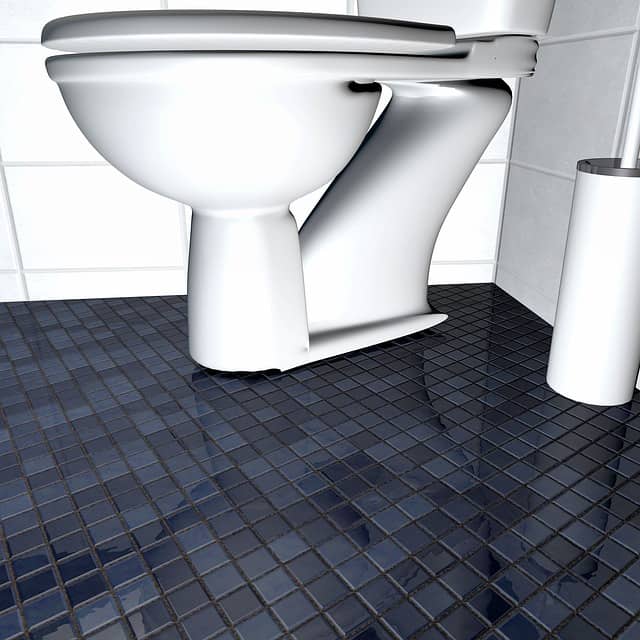Pex pipe has been used in residential plumbing for over 20 years. Over the past 10 years or so, there has been a lot of data available with regards to pex. I really enjoy using pex for it’s ease of installation. I used to install a lot more copper pipe and the difference between installing copper and pex is night and day! As great as pex is, there are still some disadvantages to this product.
As with any plumbing product, pex has some disadvantages such as leaching chemicals. Pex can be damaged by animals and shouldn’t be installed near heat or hot fixtures like water heaters. Pex is also sensitive to UV light. Pex pipe is permeable, non-recyclable and shouldn’t be installed outdoors.
As you can see, there are definitely some disadvantages for using pex pipe. However, I’m not sure the disadvantages outweigh the advantages. I wrote this article to better inform you about pex pipe, so you’re at least aware of the drawbacks, even though pex is an excellent product and I wouldn’t hesitate to use it in just about any plumbing application.
Let’s go over my disadvantages listed above along with some other info. I think would be relevant to this topic, to better help you understand pex.
Pex Plumbing Disadvantages
Here’s my list of disadvantages wit regards to pex pipe. This doesn’t mean there aren’t others, it’s just what I came up with from my own experience and knowledge about the product.
Pex pipe can potentially leak chemicals. Some types of pex pipe are reported to leak PBA’s and if you have been alive over the last 20 years, you know you don’t want to drink water out of anything that can leak PBA’s. PBA stands for bisphenol A which is a chemical used when making plastic products. It’s been around for 50 to 60 years.
Do your own research when you go to buy pex pipe however, what you want to look for is the PEX type B pipe as it’s less likely to leach any chemicals into the water.
Pex pipes can be damaged by animals. This might be obvious, but it still needs to be said. If rats or other wild critters are a potential issue where you live, you might want to reconsider using pex. Rodents can gnaw away at pex pipe until it sprouts a leak, causing damage to your home. If this is something you’re concerned about, then you should use copper pipe instead.
Pex cannot be installed directly to hot fixtures. Plumbing code in most regions states that copper pipe must be installed to a water heater first, then connecting to pex afterwards is okay. The amount of copper pipe required is typically 18”. Another location you’ll see copper pipe connected before pex is shower faucets. So, if you thought you wouldn’t need to use any copper pipe at all in your home, now you know you’ll need a bit.
Pex pipe is sensitive to UV light. Since pex is sensitive to UV light, you’ll only want to install it in places where no UV light will shine on it. This doesn’t, however, affect the performance of the pipe.
Pex pipe is permeable. This means there’s the potential of contaminants leaching through the pipe, affecting the quality of the water. Although deemed as permeable, it isn’t very common and only a possibility of occurring. I wouldn’t worry about this disadvantage at this stage, however. Maybe in another 20 or so years it’ll be an issue for older pex pipe, but for now, pex is still too new.
Pex pipe is not recyclable. Currently, the pex pipe being manufactured is not recyclable. This means any waste on job sites that’s not used must be thrown in the trash. Pex is not recyclable as it can’t be melted properly to be repurposed. That’s not to say that some day in the future, it won’t be possible.
Pex pipe can melt in a small fire. This is kind of an extreme example but it’s true. Let’s say you have a small fire in your home that burns part of a wall. If you have copper pipe in that wall, it shouldn’t be affected. If you happen to have pex pipe in the walls, you might end up with melted pex pipe and have to re-pipe that section of your water lines. Like I said, it’s an extreme example, but it’s something that could potentially happen. I wouldn’t let this reason stop you from using pex pipe, though.
What is the Safest Pipe for Drinking Water?
At present, the safest pipe to use for drinking water lines is copper. Copper won’t leach anything and is very durable.
In years gone by when soldering was used more often, there would have been a concern with what the solder was leaching into the water since some types of solder contain lead. Now with fittings and connections such as the shark bite brands, there’s less to zero solder used.
My opinion though, is that most pex pipes are just fine for using on hard water installations for drinking.
Conclusion
In conclusion, I just wanted to point out that (overall) using pex pipe is fine for just about any application, provided it meets the building code for your region.
All the disadvantages I’ve listed above shouldn’t discourage you from using this revolutionary plumbing product. It’s so easy to use, carry and store that almost anyone can figure out how to install it.
Thanks for reading and good luck!
Related Posts



